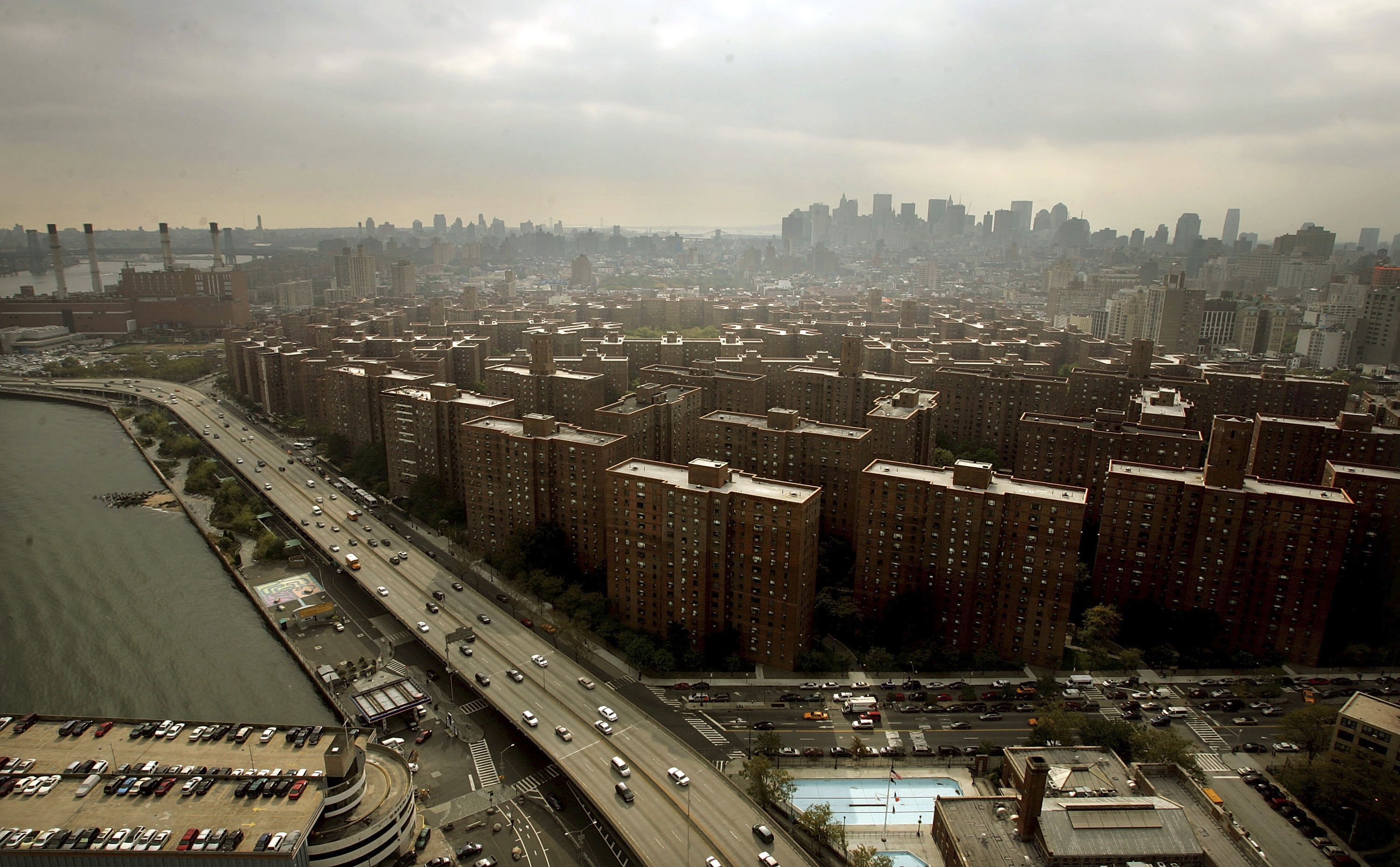How social housing can save the American city
Let's talk about the private market rent trap


The United States is suffering a rental crisis.
Some 43 percent of Americans are renters, the greatest share in at least 50 years. Of those rental households, nearly half are cost-burdened, defined as paying more than 30 percent of their income in rent — while a quarter are severely cost-burdened, or paying more than half their income. Both those figures have more than doubled since 1960.
One faction of more market-friendly thinkers argues that deregulation is the answer. Cities need to remove zoning restrictions to allow the construction of more units, which will bring down prices through the operation of supply and demand. Economist Joe Cortright points to Portland as an example of where this has worked tolerably well.
The Week
Escape your echo chamber. Get the facts behind the news, plus analysis from multiple perspectives.

Sign up for The Week's Free Newsletters
From our morning news briefing to a weekly Good News Newsletter, get the best of The Week delivered directly to your inbox.
From our morning news briefing to a weekly Good News Newsletter, get the best of The Week delivered directly to your inbox.
But this is unlikely to work very well for more high-demand cities, which can easily get stuck in a high-rent, low-construction equilibrium. For places like New York or San Francisco, a mixture of social housing — that is, mid-range housing owned by the government and available to all — plus rent control can bypass this policy sandpit altogether.
Here's how the private market rent trap works. In cities with terrific rental demand, private developers are naturally going to want to build luxury apartments that provide the greatest profit. (In 2016, some 40 percent of new building was for units renting for over $1,500, with a further 25 percent for $1,100-$1,499). Such apartments tend to be larger and also spend a good deal of space on amenities like gyms and lobbies. Yet it's hard to build in existing high-rent districts, because wealthy people fear additional supply cutting the value of their home or condo and also tend to have astronomical levels of NIMBY politics, plus the money to make those opinions count. They view their neighborhood as containing access to a bundle of amenities like schools and parks that should be preserved against outsiders.
However, outright poor districts tend to have a bad reputation, thus foreclosing high-profit projects. Developers thus tend to flock to medium-rent districts, where political opposition is not quite so strong. But even here they run into political resistance from anti-gentrification activists, for the obvious and logical reason that high-end projects will attract other luxury amenities and increase local rents even if they decrease average city rents. People don't want to be displaced for some vague and hypothetical dispersed benefit.
And even if activists can't stop all building, they can slow it down (and construction takes a long time in any case). The result is gentrification: a medium-rent district being slowly transformed into a high-rent one, which then becomes another wealthy NIMBY stronghold.
A free daily email with the biggest news stories of the day – and the best features from TheWeek.com
It's possible that if cities went absolutely hog-wild on new market construction, they might be able to leapfrog this scenario, saturate the luxury market, and avoid the local price increases like Portland seems to have done. Realistically, it is very likely not going to happen anywhere fast enough to keep rents down.
And even that scenario wouldn't work everywhere. In really high demand locations, there is probably no physically possible level of housing supply that could bring down rents to a tolerable level. In Manhattan, for instance, density is over 72,000 residents per square mile, already one of the highest figures in the world. But you could almost certainly double that and not even satiate all the luxury demand. A high-end building boom on the island over the last few years has brought down rents by 3.8 percent this year — to an eye-watering median of $3,168.
Rent control plus social housing is a far superior option for such places. Here's how it works.
Rent control, obviously, places rents mostly outside the market. Contrary to the witless dogmatism in every Econ 101 textbook, it's a perfectly reasonable policy for places with extreme rent demand. As Sarah Jones explains, it allows people to stay in their homes long-term, allowing for stable and healthy communities to develop, insulated from the wild swings in market prices and concomitant constant moving from place to place. The main problems with rent and vacancy regulations in New York is that they are full of loopholes and rarely enforced in any case.
So strengthening rent control would greatly reduce the resistance of anti-gentrification activists to new construction. Residents could be confident they will not be pushed out of their homes by a new project.
But what rent control does not do is provide a supply of new units. That's where social housing comes in. This refers to government-owned housing that is open to all residents (contrary to American-style public housing, which is restricted to the poor). This provides the needed housing supply, and in all market segments simultaneously — not just the luxury market. Without the need for profit, overall rents could be lower — but with broad socioeconomic diversity among tenants, governments could still use "social rents" to pay for upkeep (no huge subsidies required) and cross-subsidize their tenants. For example, one-third could be reserved for the poor and working class, charged a very low rent; another third with higher rents but still below market; and the final third charged prevailing market rates (all of which would then be folded into the rent control scheme). Even the richer tenants would be no worse off than they would be in the private market — which would receive some downward price pressure as well. Similar programs work well in Vienna and Finland.
Furthermore, social housing is strictly superior to market-rate housing in supply efficiency terms. Governments have a lower cost of capital than private developers, so they can stretch their construction dollar further and make better use of scarce resources. They also generally own a lot of land, making for zero acquisition costs in many cases (the land under crumbling city-wrecking highways are one good option). Apartments would be modest, both smaller than luxury apartments and without space-gobbling lobbies or concierge service — making for greater unit density.
Social housing projects would of course trigger NIMBY backlash, especially if they're located in rich neighborhoods (as many should be). But by proposing multiple projects across the entire city that really would benefit almost all parts of society, it might help activate a citywide coalition that could overcome local resistance.
Make no mistake, it would be an enormous political lift. But the payoffs could be huge — and I see no other realistic option that will take a really big bite out of the rental crisis. Cities need tens or hundreds of thousands of new, immediately affordable units. This is the quick and direct way to get them.
Ryan Cooper is a national correspondent at TheWeek.com. His work has appeared in the Washington Monthly, The New Republic, and the Washington Post.
-
 Best poetry books of 2025
Best poetry books of 2025The Week Recommends Magnificent collections from Luke Kennard, Leo Boix and Isabelle Baafi
-
 ‘Furious Minds: The Making of the MAGA New Right’ by Laura K. Field and ‘The Dream Factory: London’s First Playhouse and the Making of William Shakespeare’ by Daniel Swift
‘Furious Minds: The Making of the MAGA New Right’ by Laura K. Field and ‘The Dream Factory: London’s First Playhouse and the Making of William Shakespeare’ by Daniel SwiftFeature An insider’s POV on the GOP and the untold story of Shakespeare’s first theater
-
 How to shop smarter with a grocery budget
How to shop smarter with a grocery budgetThe Explainer No more pushing your cart down the aisles on autopilot
